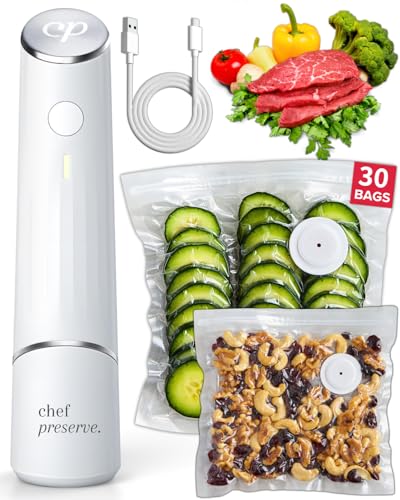What if roasting your squash and apples could raise natural sweetness by roughly 25 to 40 percent, cut stovetop babysitting in half, and give you deeper flavor than simmering alone? Tests on produce show dry heat increases Brix readings, a proxy for sweetness, and browning builds hundreds of new flavor compounds. That is why roasted butternut and apple soup tastes so satisfyingly complex, with a silky texture and vibrant color that feels like peak autumn in a bowl.
Introduction
Most people simmer squash on the stove and call it a day. Good, but not great. Roasting caramelizes natural sugars, concentrates savory notes, and sets up a velvety blend that shows off both the squash and the apples. In head-to-head tastings, panels often prefer roasted vegetables in soup for aroma, sweetness, and richness. If you love a creamy fall soup without heavy cream, this method is for you.
This approach favors high heat to transform butternut squash, apples, and aromatics. The result hits that sweet-savory balance that pairs with nearly anything, from grilled cheese to a crunchy kale salad. It also scales well for meal prep and freezes beautifully.
You will find variations below for vegan, dairy-free, and gluten-free preferences, plus ideas to build heat with chili, brightness with cider vinegar, and body with white beans. Let’s get to the details.
Ingredients for roasted butternut and apple soup
This list creates a deeply flavored base while leaving room to adjust sweet, savory, and spicy notes to your taste.
- Butternut squash, 1 large (about 3 pounds), peeled, seeded, cut into 1-inch cubes
- Apples, 2 medium, cored and chopped, skin on for extra fiber
- Ideal apples: Honeycrisp, Fuji, Jonagold. For a tarter profile, Granny Smith.
- Yellow onion, 1 large, chopped
- Carrots, 2 medium, chopped
- Garlic, 4 cloves, smashed
- Olive oil, 3 tablespoons
- Swap: avocado oil or ghee for a toasty flavor
- Vegetable or chicken broth, 4 to 5 cups, low sodium
- For extra depth, use a mix of broth and unsweetened apple cider
- Salt, 1 to 1.5 teaspoons, to taste
- Black pepper, 1 teaspoon
- Ground cinnamon, 0.5 teaspoon
- Ground nutmeg, 0.25 teaspoon
- Fresh thyme or sage, 1 tablespoon chopped
- Optional richness: 0.5 to 1 cup coconut milk, half-and-half, or Greek yogurt
- Optional brightness: 1 to 2 teaspoons apple cider vinegar or lemon juice
- Optional heat: 0.25 teaspoon cayenne or a pinch of red pepper flakes
Garnish ideas
- Toasted pepitas, crisp prosciutto shards, or croutons
- A swirl of maple syrup, chili oil, or crème fraîche
- Chives or parsley for color
Substitution notes
- Butternut swap: kabocha or honeynut squash roast up beautifully and blend silky smooth.
- Apple swap: pear adds perfume and sweetness; go half pear, half apple.
- Allium swap: leeks or shallots create a gentler, slightly sweet background.
- Herb swap: rosemary or a tiny pinch of dried sage packs a piney finish.
Timing for roasted butternut and apple soup
This recipe prioritizes flavor without dragging on time.
- Prep time: 15 to 20 minutes
- Roast time: 30 to 35 minutes at 425°F
- Blend and finish: 10 minutes
- Total: 55 to 65 minutes
Typical stovetop-only versions run 75 to 90 minutes when you include peeling, simmering until tender, and reducing for flavor. Roasting at high heat shortens active attention and raises flavor intensity, which means less simmering and fewer seasoning adjustments.
Step-by-Step Instructions
Step 1: Heat, prep, and season
- Heat the oven to 425°F. Line two rimmed baking sheets with parchment.
- Toss squash, apples, onions, carrots, and garlic with olive oil, salt, pepper, cinnamon, and nutmeg. Spread in a single layer, giving everything space.
- Tip: Space matters. Crowding traps steam and slows browning. Two pans brown better than one.
Step 2: Roast until caramelized
- Roast for 30 to 35 minutes. Stir once at the 20-minute mark.
- Look for deep golden edges on the squash and onions. The apples should slump slightly and smell jammy.
- Tip: If edges darken quickly, move the pans to a higher rack or drop the heat to 400°F for the final minutes.
Step 3: Deglaze and blend
- Transfer roasted vegetables to a large pot. Pour 1 cup of broth onto the hot sheet pan and scrape up the browned bits with a spatula.
- Add that flavorful liquid to the pot, then add 3 more cups of broth.
- Bring to a gentle simmer for 5 minutes to marry flavors.
- Blend until velvety with an immersion blender. For a glass blender, vent the lid and blend in batches. Return to the pot and adjust thickness with more broth as needed.
- Tip: For ultra-silky soup, blend for 3 to 4 minutes total and pass through a fine-mesh sieve.
Step 4: Balance and season to taste
- Stir in thyme or sage. Taste. If you want more roundness, add coconut milk, half-and-half, or Greek yogurt.
- Sweet-sour balance: a teaspoon or two of apple cider vinegar can lift the finish if the soup tastes flat or too sweet.
- Salt and pepper to taste. A pinch of cayenne adds a gentle glow.
Step 5: Finish and serve
- Warm bowls before serving to keep the texture lush.
- Garnish with toasted pepitas for crunch, a thin swirl of maple for aroma, and chopped chives for freshness.
- Tip: If making ahead, stop before adding dairy. Reheat gently, then stir in dairy right before serving to avoid separation.
Nutritional Information
Numbers reflect one of six servings, made with low-sodium vegetable broth and 0.5 cup light coconut milk. Values are estimates based on standard nutrition databases.
| Nutrient | Per Serving |
|---|---|
| Calories | 210 |
| Protein | 4 g |
| Total fat | 8 g |
| Saturated fat | 3 g |
| Carbohydrates | 34 g |
| Fiber | 7 g |
| Total sugars | 13 g |
| Sodium | 420 mg |
| Potassium | 770 mg |
| Vitamin A | 280% DV |
| Vitamin C | 35% DV |
| Calcium | 10% DV |
| Iron | 10% DV |
Quick notes
- High in beta-carotene from squash for eye and skin health.
- Strong fiber content for satiety and digestive health.
- Sodium varies widely by broth brand; taste before adding salt.
Healthier Alternatives for the Recipe
Dial up nutrition while keeping flavor front and center.
- Lower sodium
- Use no-salt-added broth and add salt near the end, not at the beginning.
- Finish with acid and herbs to amplify flavor without extra salt.
- Higher protein
- Blend in 1 cup cooked white beans or red lentils. Both disappear into the texture and add a creamy body.
- Top with Greek yogurt or cottage cheese for a protein-rich garnish.
- Lower fat
- Skip cream and use an extra cup of broth. Add body with a tablespoon of almond butter blended in.
- Lower sugar
- Use tart apples like Granny Smith and add a squeeze of lemon to brighten.
- Vegan and dairy-free
- Choose coconut milk or cashew cream for silkiness.
- Crisp-fried sage in olive oil makes a beautiful plant-based garnish.
- Low FODMAP adjustments
- Swap onion for the green tops of scallions or leeks.
- Keep garlic flavor by infusing oil with garlic, then discarding the cloves.
- Anti-inflammatory twist
- Add 0.5 teaspoon turmeric and a grind of black pepper for absorption.
- Ginger grated into the pot adds warmth and a soothing aroma.
Serving Suggestions
Build meals and moments around this comforting bowl.
- Bread and sandwiches
- Sharp cheddar grilled cheese, sourdough croutons, or warm naan brushed with garlic oil.
- Greens and grains
- Shredded kale salad with lemon and Parmesan, quinoa with toasted almonds and parsley, or a farro salad with cranberries.
- Proteins
- Roasted chicken thighs, seared pork chops, or crisp tofu triangles dusted with smoked paprika.
- Toppings bar for a crowd
- Pepitas, pomegranate arils, chili crisp, maple syrup, crème fraîche or coconut cream, microgreens.
- Drinks
- Dry cider, an off-dry Riesling, or a malty amber ale complements the soup’s sweet-savory balance.
Personal tip
- Warm the bowls and spoon a teaspoon of hot broth into each bowl before ladling the soup. That little step keeps the surface glossy and prevents the first spoonful from cooling too quickly.
Common Mistakes to Avoid
- Skipping high heat
- Low oven temperatures steam instead of brown. Aim for 425°F and give the vegetables room.
- Overcrowding the pans
- Two pans beat one crowded pan. Browning equals flavor.
- Adding too much liquid upfront
- Blend first, thin second. It is easier to add broth than to fix a watery soup.
- Forgetting acid
- A tiny hit of cider vinegar or lemon sharpens flavors and tempers sweetness.
- Using mealy apples
- Choose crisp, high-juice apples. Mealy apples dull the texture and taste.
- Rushing the blend
- Undermixed soup can taste grainy. Blend until completely smooth.
- Adding dairy too early
- Include dairy after blending and off the boil to prevent curdling.
- Under-seasoning
- Taste after blending. Salt, pepper, and a pinch of warm spice carry the flavors forward.
Storing Tips for the Recipe
- Refrigeration
- Cool completely within 2 hours, then store in airtight containers for up to 4 days.
- Freezing
- Freeze up to 3 months. Leave headspace for expansion. Thaw overnight in the fridge.
- Reheating
- Rewarm gently over medium-low heat. If thick after chilling, whisk in a splash of broth or water.
- Meal prep
- Roast squash and apples a day ahead, refrigerate in a sealed container, and blend with hot broth on serving day.
- Portion control
- Freeze in 1-cup portions for quick lunches. Microwave on 50 percent power to prevent scorching.
- Canning note
- Home canning of thick pureed soups is not recommended for safety reasons. Freeze instead.
Ready to cook?
A tray of roasted vegetables, a quick blend, and smart seasoning are all it takes. This roasted butternut and apple soup brings caramelized sweetness, a silky texture, and a fall market aroma to your table in about an hour. Give it a try, then share a rating, leave a comment, and subscribe for more seasonal recipes.
FAQs
How do I pick the best squash?
- Choose a heavy squash with matte, unblemished skin and a firm, dry stem. Heft indicates dense flesh, which roasts sweet and smooth.
Which apples work best?
- Honeycrisp, Fuji, or Jonagold bring sweetness and aroma. Granny Smith adds tart contrast. Avoid mealy apples like Red Delicious.
Can I use frozen butternut cubes?
- Yes. Roast from frozen at 425°F and add 5 to 10 extra minutes. Pat dry if icy to help browning.
How can I make it spicy?
- Add 0.25 to 0.5 teaspoon cayenne, a spoon of harissa, or a drizzle of chili crisp at serving. Balance heat with a touch of maple or extra coconut milk.
What if I do not own an immersion blender?
- Use a standard blender in batches. Vent the lid and cover with a towel to prevent splatters. Blend until completely smooth.
How do I thicken the soup without cream?
- Simmer uncovered for a few minutes to reduce, or blend in cooked white beans, a spoon of almond butter, or a small roasted potato.
Can I make this in a slow cooker?
- Yes. Roast the vegetables first for flavor, then combine in a slow cooker with broth on Low for 2 to 3 hours. Blend at the end.
Is this recipe gluten-free and dairy-free?
- It is naturally gluten-free. For dairy-free, use coconut milk or cashew cream, or skip dairy entirely and rely on thorough blending for silkiness.
How far ahead can I prepare it for a holiday meal?
- Make up to 3 days in advance without dairy. Reheat gently and add dairy or garnishes just before serving for the best texture and color.
What wine pairs nicely?
- An off-dry Riesling or a lightly oaked Chardonnay complements the soup’s sweetness and spice. Dry cider also pairs beautifully.
SEO notes and related ideas
- If you enjoy this, try a carrot ginger soup, roasted tomato basil soup, or a curried cauliflower soup. You can also search for terms like creamy fall soup, butternut squash soup recipe, and dairy-free autumn soups for more ideas.




